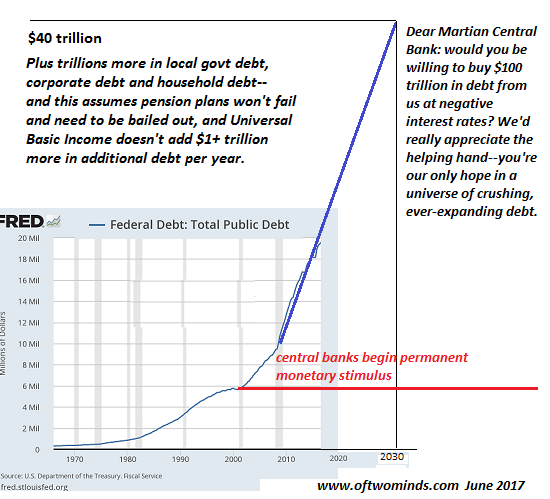
Photo Source futureatlas.com | CC BY 2.0
Today’s financial malaise for pension funds, state and local budgets and underemployment is largely a result of the 2008 bailout, not the crash. What was saved was not only the banks – or more to the point, as Sheila Bair pointed out, their bondholders – but the financial overhead that continues to burden today’s economy.
Also saved was the idea that the economy needs to keep the financial sector solvent by an exponential growth of new debt – and, when that does not suffice, by government purchase of stocks and bonds to support the balance sheets of the wealthiest layer of society. The internal contradiction in this policy is that debt deflation has become so overbearing and dysfunctional that it prevents the economy from growing and carrying its debt burden.
Trying to save the financial overgrowth of debt service by borrowing one’s way out of debt, or by monetary Quantitative Easing re-inflating real estate, stock and bond prices, enables the creditor One Percent to gain, not the indebted 99 Percent in the economy at large. Therefore, from the economy’s vantage point, instead of asking how the banks are to be saved “next time,” the question should be, how should we best let them go under – along with their stockholders, bondholders and uninsured depositors whose hubris imagined that their loans (other peoples’ debts) could go on rising without impoverishing society and preventing creditors from collecting in any event – except from government by gaining control over it.
A basic principle should be the starting point of any macro analysis: The volume of interest-bearing debt tends to outstrip the economy’s ability to pay. This tendency is inherent in the “magic of compound interest.” The exponential growth of debt expands by its own purely mathematical momentum, independently of the economy’s ability to pay – and faster than the non-financial economy grows.
…click on the above link to read the rest of the article…












